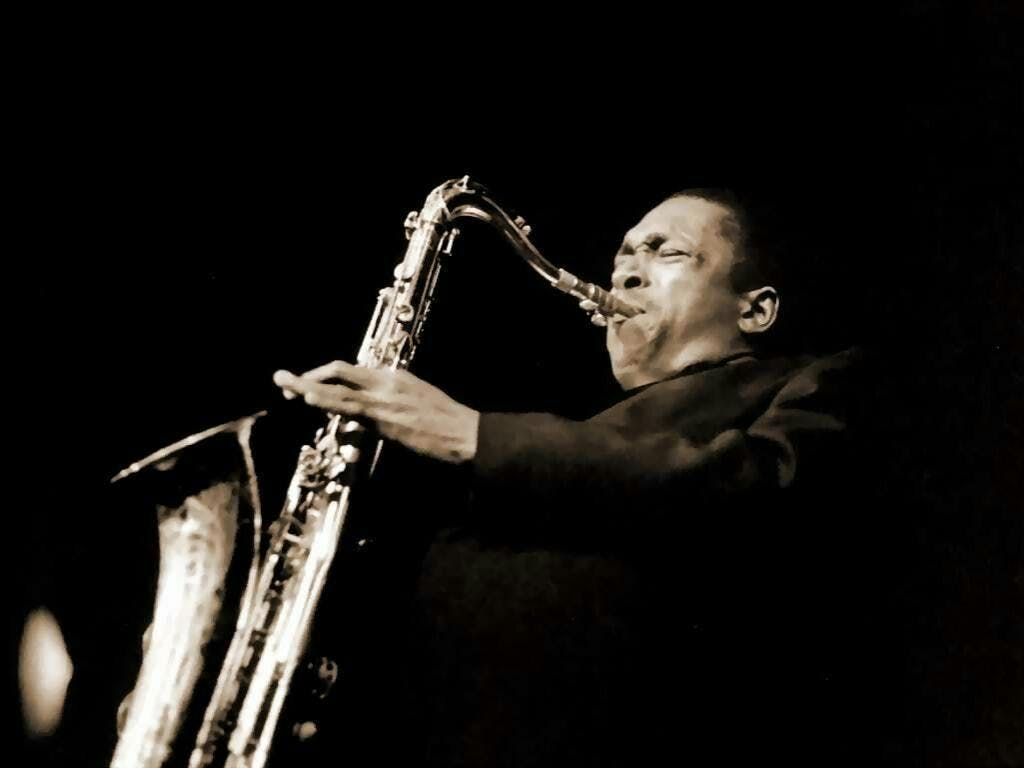Total flexibility, no commitment
A world of unique, crafted gins
Easy, free and reliable delivery

September's Gin of the Month: Burleigh's Gin's Jazzy Sax and John Coltrane
Below is an excerpt from GINNED! Magazine about our September 2015 Gin of the Month Burleigh's Gin. Every month, Craft Gin Club members receive a bottle of amazing small-batch gins such as Burleigh's accompanied by GINNED! Magazine which is full of features about the gin, the distillery and loads of fascinating features.
When he’s not brewing up his next batch of Burleigh’s, you’ll find Master Distiller Jamie Baxter with a saxophone dangling from his neck, an instrument that is as much a part of his identity as his stills. But whereas on the distillery floor one could call him Gin Master Jamie, when it comes to sax expertise, Baxter leaves it up to the likes of Jazz Master John - John Coltrane, that is.
Often hailed as possessing the most proficient fingers that ever graced the brass keys, Coltrane’s prolific career made him a musical legend. Although his life was cut short by illness in 1967, his recordings play around the world to this day and jazz groups in nightclubs everywhere try and fail to match his improvisational skill.
With 25 records released before his death and a countless number of posthumous and tribute albums - including the recent release of the live recording, Offering: Live at Temple University - Coltrane left behind a canon to which music scholars could dedicate entire lives. But one album in particular is regularly praised as Coltrane at his best: the 1964 studio recording, A Love Supreme.
An immediate masterpiece, A Love Supreme is as much the culmination of Coltrane’s spiritual journey as Baxter’s gin journey has recently culminated with Burleigh’s.
Jamie Baxter on the sax with his band Beeza and the Wildcats play the Monkees classic.
As a younger man, the musician struggled with drug addiction, particularly heroin, a common drug amongst the jazz players of his day. Many beboppers, as jazz musicians were known, thought the drug helped them transmit the calm it set running through their veins into the improvisational beauty that burst from their instruments. Coltrane perhaps experienced too much calm. In 1954, at the sprightly age of 28, he suffered his first major professional setback due to his less-than-sprightly addiction as Duke Ellington let him go from his band.
Recovering addict Miles Davis brought on Coltrane, by then known simply as “Trane”, a year later in September 1955 to fill the sax position in his five-piece band. Although his association with Davis firmly established Coltrane as one of the most highly-regarded jazz musicians of his day, their first collaboration lasted little more than a year, again due to the North Carolina-native’s drug use. Davis gave him a second chance after a six week hiatus, but by April 1957, Coltrane’s usage was bad enough for Davis to let him go permanently.
This is where A Love Supreme really begins.
Having been fired twice by the man who is still today the most recognized name in jazz, Coltrane accepted his addiction and decided to fight it cold turkey. Locked in his room by his mother and his wife until he kicked his habit, he emerged an enlightened man and set out on the path to connect with God.
Seven years and a number of solo albums later, Coltrane once again locked himself in a room only this time, the only addiction he brought with him was his music. Armed with pen, paper and sax, he emerged triumphant five days later declaring “This is the first time that I have received the music for all that I want to record in a suite. This is the first time I have everything, everything ready.” His wife remembers his descent from his room as “Moses coming down from the mountain… there was that joy, that peace in his face, tranquility.”
What brought Coltrane tranquility was the score for A Love Supreme, a score that reads like the story of a reformed addict with a new found and holy purpose. Arranged in four phases - “Acknowledgment”, “Resolution”, “Pursuance” and “Psalm” - A Love Supreme was recorded in December 1964 in one four-hour session from 8pm to midnight. The New Jersey studio in which Coltrane’s quartet recorded fittingly had cathedral ceilings and the band dimmed the lights to create a spiritual ambiance.
Although Coltrane had afforded his band mates a loose skeleton of chord flow on which to improvise as is true of much jazz, the chemistry exuded by his quartet makes it almost seemed as if every note were planned.
The session’s fourth movement, Psalm, was particularly revolutionary. The phase floats over, under and through a poem written by Coltrane himself, a love letter to God and the spilling of his grateful soul on paper. As the band prepared for Psalm, that paper rest in front of him. Piano chimed. Drums pulsed. And Coltrane recited the poem… with his saxophone. For seven minutes, Trane translated his words through the bell of his sax, his soul simultaneously immortalized on paper and soaring to the heavens.
The heavenly sounds of Coltrane and his collaborators - pianist McCoy Tyner, drummer Elvin Jones and bassist Jimmy Garrison - on A Love Supreme made the resulting 33-minute cut one of the best-selling jazz recordings of its period, yielding half-a million sales before 1970 even as bands like the Beatles and the Rolling Stones topped the charts.
Despite the quartet playing the piece live only once and no record of the sax master discussing the album, even with his band mates, the impact of A Love Supreme lives on today. Rolling Stone placed it at #47 on its Greatest Albums of All Time. The National Museum of American History bought and preserved the opus’ manuscript in 2005. And the album regularly features at the top of the list of various critics’ favourite jazz recordings.
If Baxter found the inspiration for his spirits in A Love Supreme, it wouldn’t be surprising. So as you sip his Burleigh’s gin, we suggest you play the album and let Jamie and John carry you away on their masterful gin and jazz.







